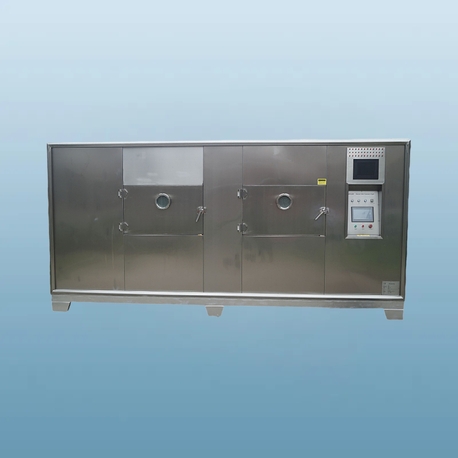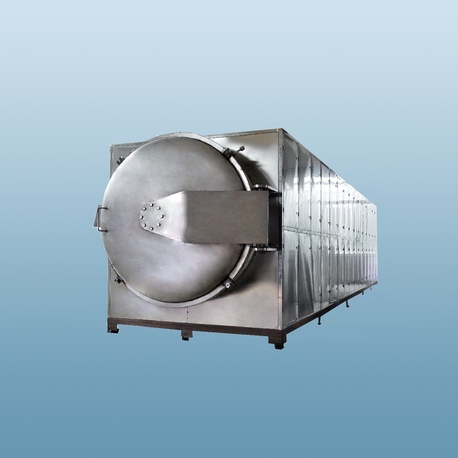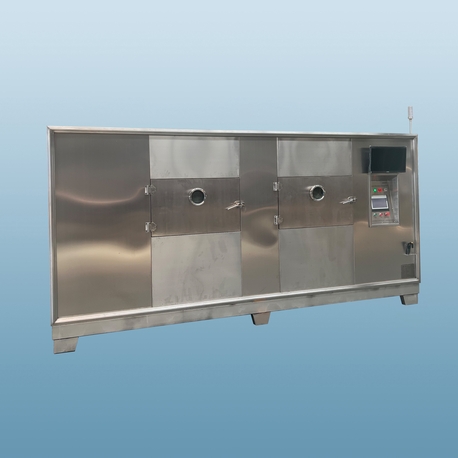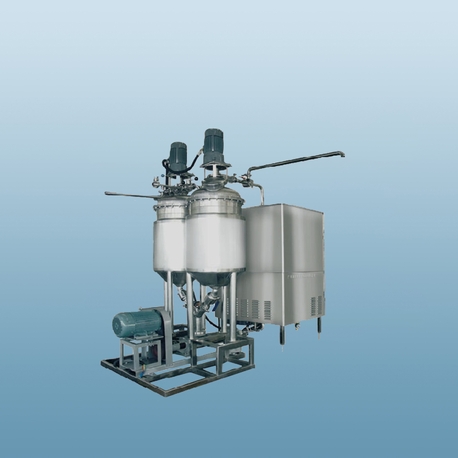In the competitive landscape of industrial manufacturing, efficiency, consistency, and product quality are non-negotiable. When it comes to removing moisture from materials on a large scale, many operations turn to a workhorse of the industry: the industrial dehydrator oven. Far more advanced than their domestic counterparts, these systems are engineered for precision, durability, and high-volume output. Whether you're in food processing, pharmaceuticals, or chemicals, integrating a robust dehydration solution can be a game-changer.
Brands like Nasan have spent decades refining this technology, understanding that the right dehydrator oven is not just an appliance but a critical component of the production chain. Let's delve into how this powerful equipment works and why it might be the key to unlocking your next leap in productivity.

The Core Advantages: Why a Dedicated Dehydrator Oven is Essential
An industrial dehydrator oven is designed to do one thing exceptionally well: remove moisture through controlled heat and airflow. But the benefits extend far beyond this simple function.
Unmatched Product Consistency: Unlike open-air drying or less sophisticated methods, a commercial dehydrator oven provides precise control over temperature and airflow. This ensures every batch is dried uniformly, eliminating hotspots and under-dried pockets that can compromise your entire product run.
Significantly Extended Shelf Life: By efficiently reducing water activity (aw), these ovens inhibit the growth of microorganisms like bacteria, mold, and yeast. This is fundamental in the food industry for creating stable, long-lasting products without relying heavily on preservatives.
Enhanced Process Efficiency: Time is money. Industrial dehydrator ovens are built for speed, capable of processing large volumes of material much faster than traditional methods. This accelerated drying cycle directly translates to higher throughput and faster time-to-market.
Concentration of Flavor and Nutrients: Particularly in food applications, a well-calibrated dehydrator oven can preserve and even intensify the natural flavors and nutritional content of ingredients, resulting in a superior end product.
Reduced Product Weight and Volume: Removing moisture makes products lighter and more compact, which dramatically cuts down on packaging and transportation costs.
Inside the Machine: The Operational Workflow of a Dehydrator Oven
Understanding the basic operation of a dehydrator oven demystifies its effectiveness. The process, while sophisticated, follows a logical sequence:
Loading: The product to be dried is evenly spread onto trays, which are then loaded into the oven's chamber. Industrial systems often feature trolley systems for easy loading of large batches.
Temperature Setting: Operators set the precise temperature based on the material's thermal properties. This is critical; too high can cook or burn the product, while too low is inefficient. Advanced models from manufacturers like Nasan offer digital PID controllers for pinpoint accuracy.
Airflow Activation: The dehydrator oven circulates heated air throughout the chamber using powerful fans. This forced convection ensures that the warm, dry air passes over all surfaces of the product, carrying moisture away.
Moisture Exhaust: The humid air is then vented out of the system. In more advanced designs, this air can be passed through a condenser to recover heat, making the dehydrator oven more energy-efficient.
Cycle Completion and Cooling: Once the predetermined drying time is complete or a target moisture content is reached, the heating elements shut off. Some systems include a cooling cycle to stabilize the product before it is unloaded, preventing condensation and ensuring quality.
Key Industries Relying on Dehydrator Oven Technology
The application of commercial dehydrator ovens is vast and varied. They are indispensable in sectors where moisture control is synonymous with product integrity.
Food Processing: This is one of the largest application areas. A dehydrator oven is used to produce dried fruits, vegetables, herbs, spices, meat jerky, and pasta. It's also crucial for creating ingredients like powdered soups and baby food.
Pharmaceuticals: In drug manufacturing, stability is paramount. A dehydrator oven is used to dry medicinal herbs, gelatin capsules, and various powder blends, ensuring they remain potent and free from microbial contamination.
Chemicals and Plastics: From drying chemical powders and catalysts to curing resins and removing moisture from plastic pellets before molding, the dehydrator oven plays a vital role in maintaining material properties and ensuring smooth manufacturing processes.
Textiles: Certain textiles and non-woven materials require precise drying and heat-setting after dyeing or coating, a task perfectly suited for an industrial dehydrator oven.

Choosing the Right Solution: What to Look For in a Commercial Dehydrator Oven
Selecting the wrong equipment can lead to endless headaches. Here are key factors to consider when investing in a dehydrator oven:
Temperature Range and Uniformity: Ensure the oven can reach and maintain the temperatures your products require, with a stated uniformity (e.g., ±2°C) to guarantee consistent results.
Airflow Design: Look for a system with a well-engineered airflow pattern (horizontal, vertical, or combination) that matches your product's geometry and density.
Construction and Materials: The interior should be made of corrosion-resistant materials like stainless steel, especially for food or chemical applications. Insulation quality directly impacts energy efficiency.
Control System: A user-friendly, programmable logic controller (PLC) allows for the creation and storage of multiple drying recipes, ensuring repeatability and reducing operator error.
Capacity and Scalability: Consider your current batch sizes and future growth. Does the manufacturer, like Nasan, offer a range of sizes and customizable configurations?
Partnering with an experienced manufacturer is crucial. A company with a proven track record, such as Nasan, can provide not only the equipment but also the technical expertise to tailor a dehydrator oven solution to your specific material and production goals.
Frequently Asked Questions (FAQ)
Q1: What is the main difference between a commercial dehydrator oven and a simple food dehydrator?
A1: The scale, precision, and durability are the primary differences. A commercial dehydrator oven is built for continuous, high-volume operation with precise digital controls for temperature and airflow. It's constructed from industrial-grade materials like stainless steel and is designed to integrate into a production line, whereas consumer dehydrators are for small-batch, intermittent home use.
Q2: Can a dehydrator oven be used for baking or cooking?
A2: No, not in the traditional sense. While both apply heat, a dehydrator oven is designed to remove moisture at lower temperatures over a longer period, often with high airflow. A baking oven is designed to cook and brown food quickly at higher temperatures, often with a different humidity environment. Their core functions and engineering are distinct.
Q3: How do I clean and maintain an industrial dehydrator oven?
A3: Maintenance protocols vary by model, but generally, they involve regularly wiping down the stainless steel interior, cleaning or replacing air filters, and inspecting heating elements and fans for debris. It's vital to follow the manufacturer's specific maintenance schedule. Companies like Nasan provide detailed operational and maintenance manuals with their equipment.
Q4: What types of energy sources do these ovens use?
A4: Industrial dehydrator ovens are typically powered by electricity, natural gas, or steam. Electric models are common for their clean operation and precise control, while gas models can be more cost-effective for operations with high thermal demands. The choice depends on local utility costs and the specific thermal profile required.
Q5: Is it possible to customize a dehydrator oven for a unique product shape?
A5: Absolutely. Reputable industrial oven manufacturers specialize in customization. This can include designing custom tray configurations, altering airflow patterns to accommodate unusual product shapes, or integrating specialized loading/unloading mechanisms to fit your production line seamlessly.









